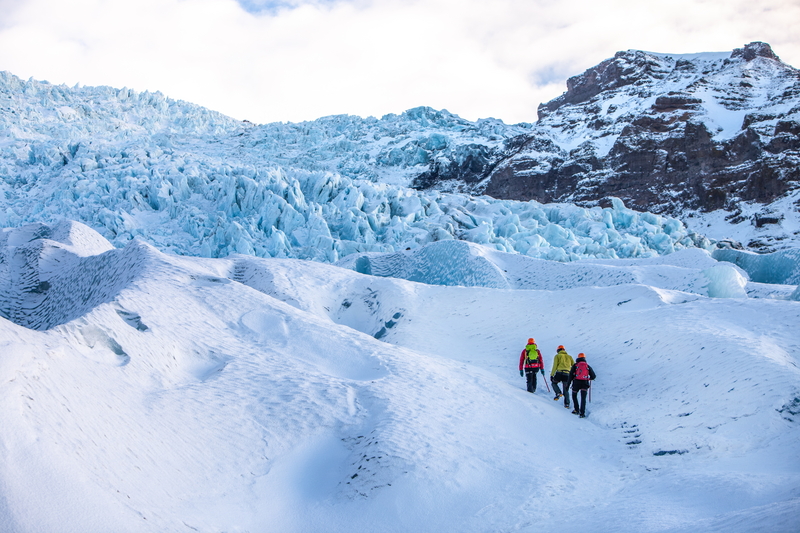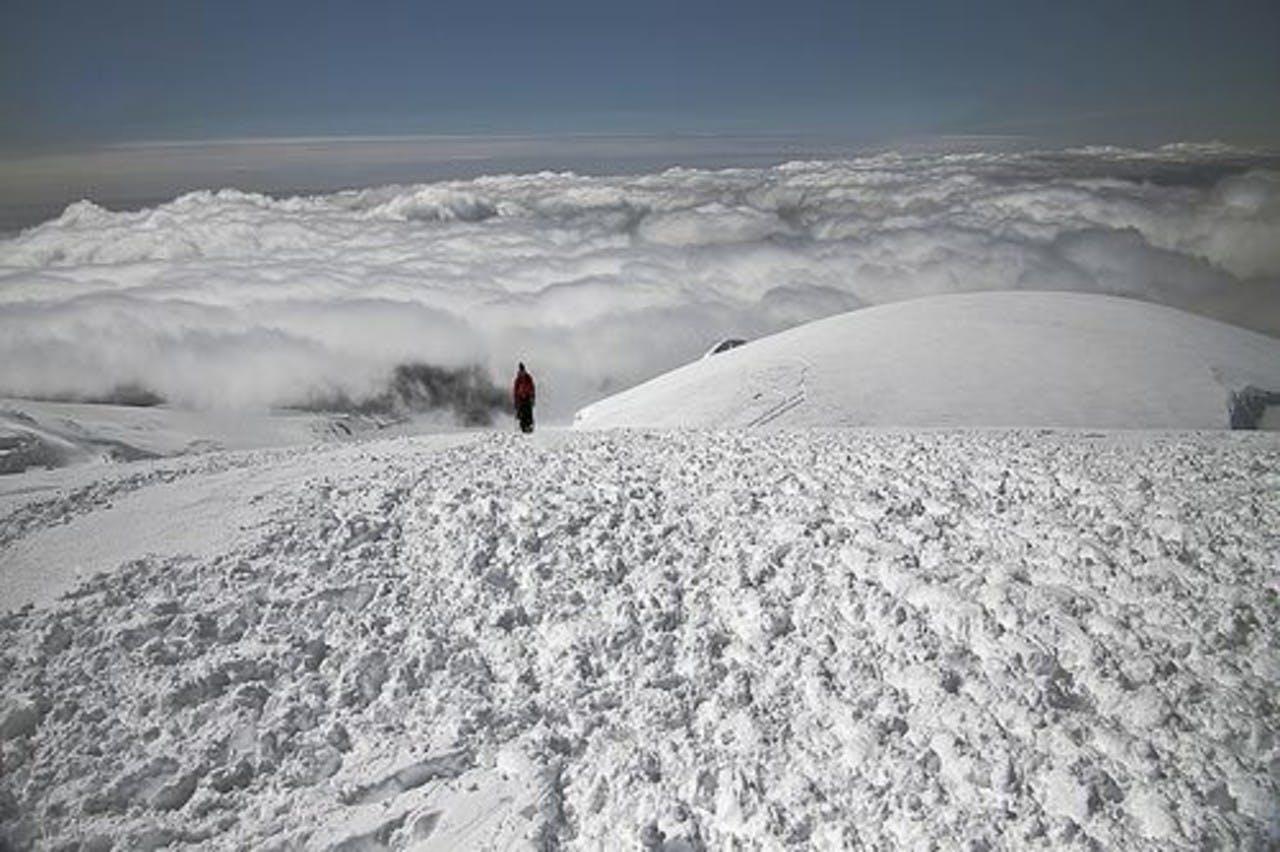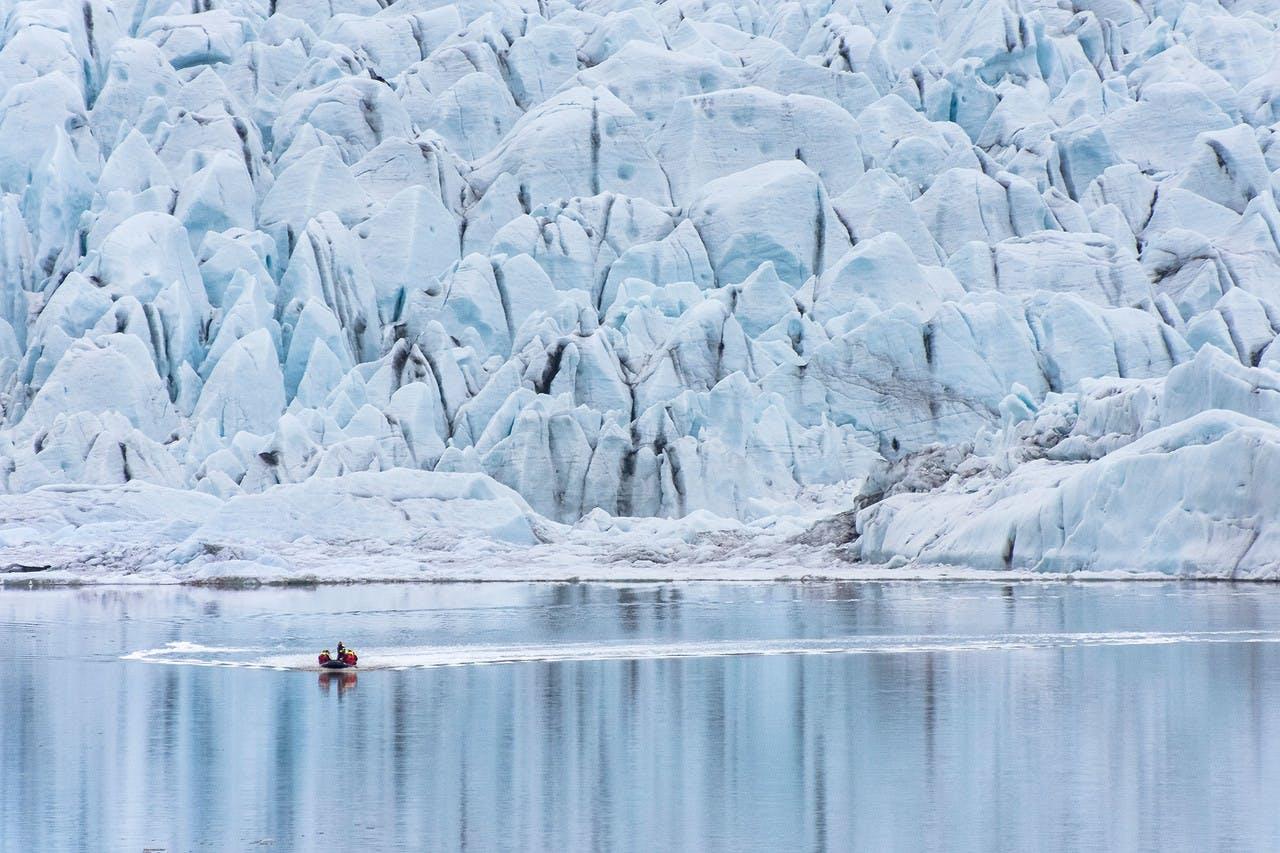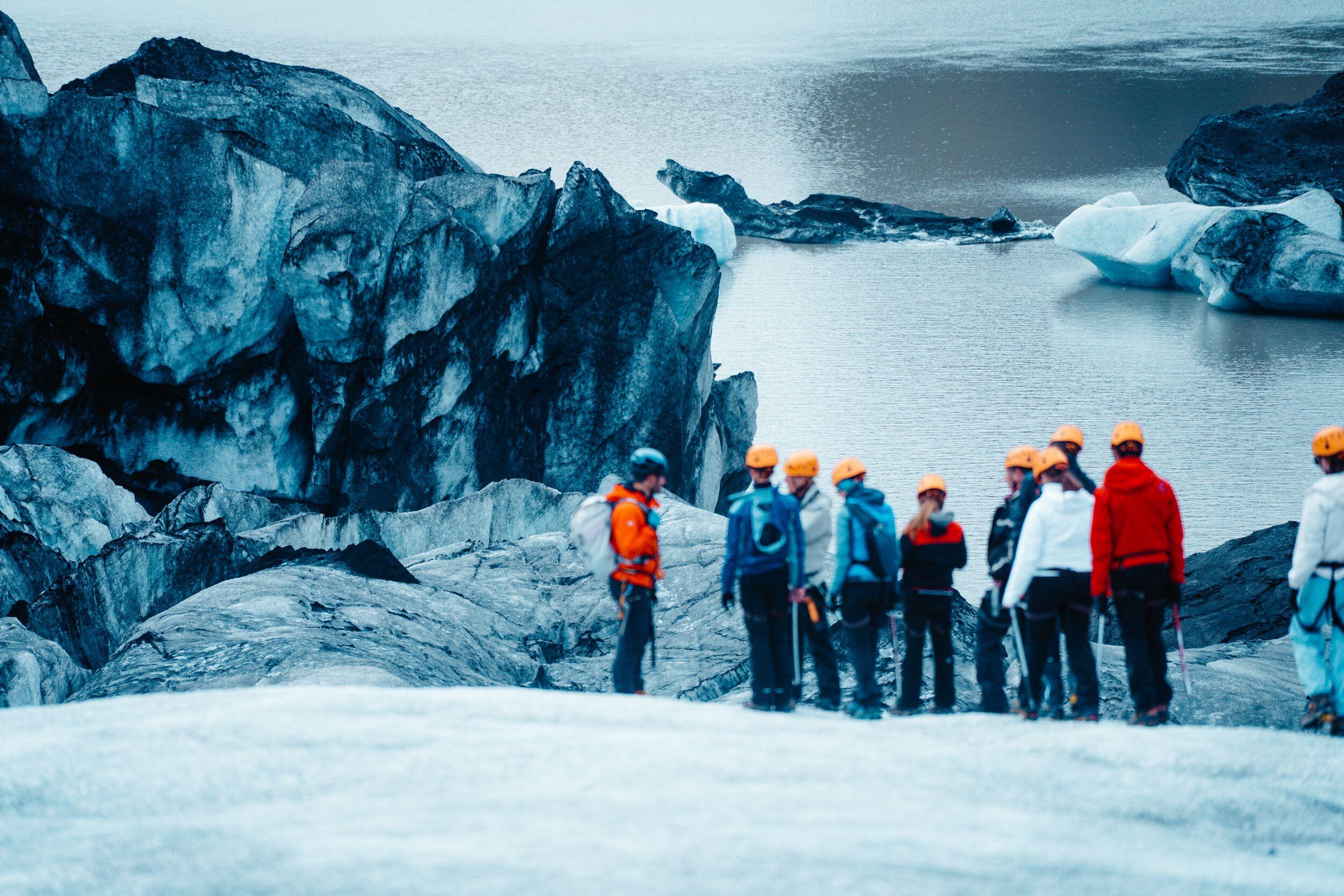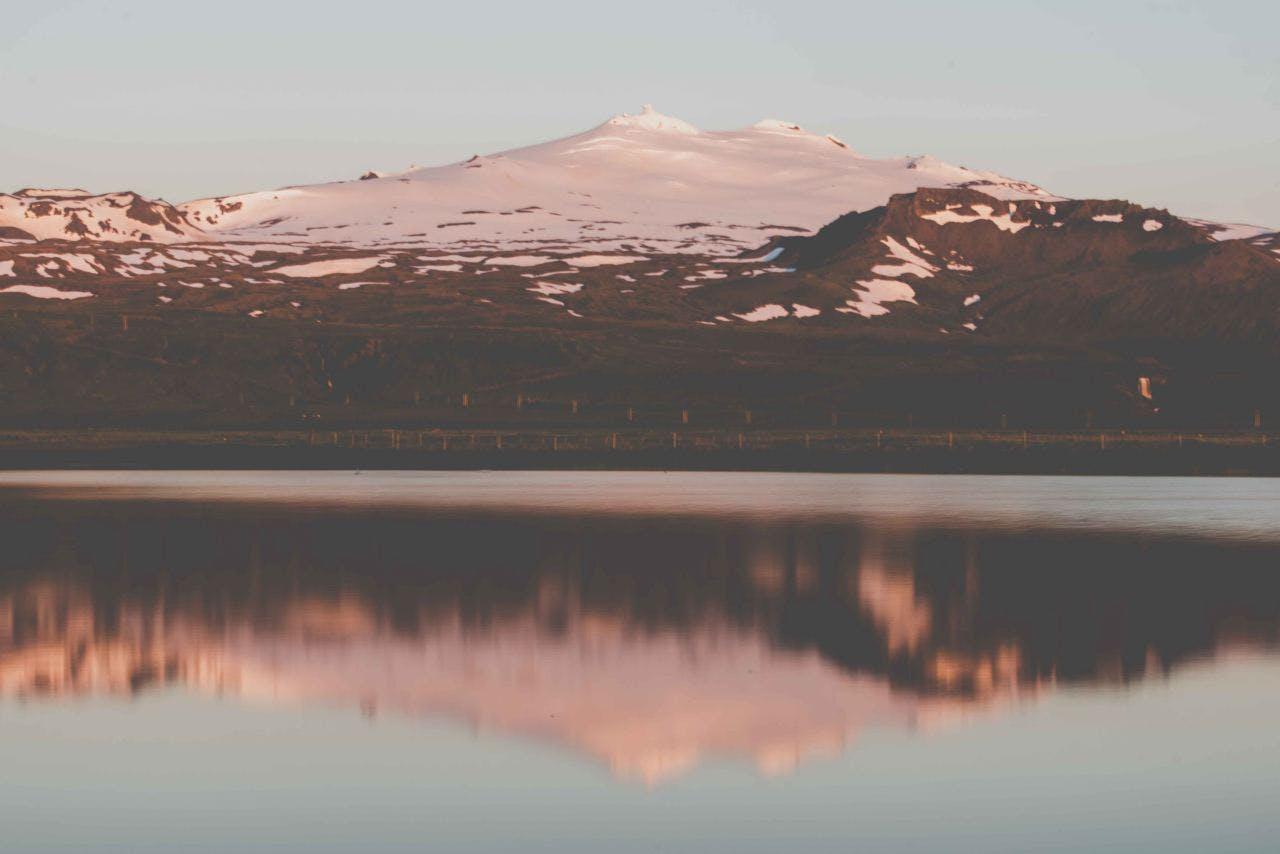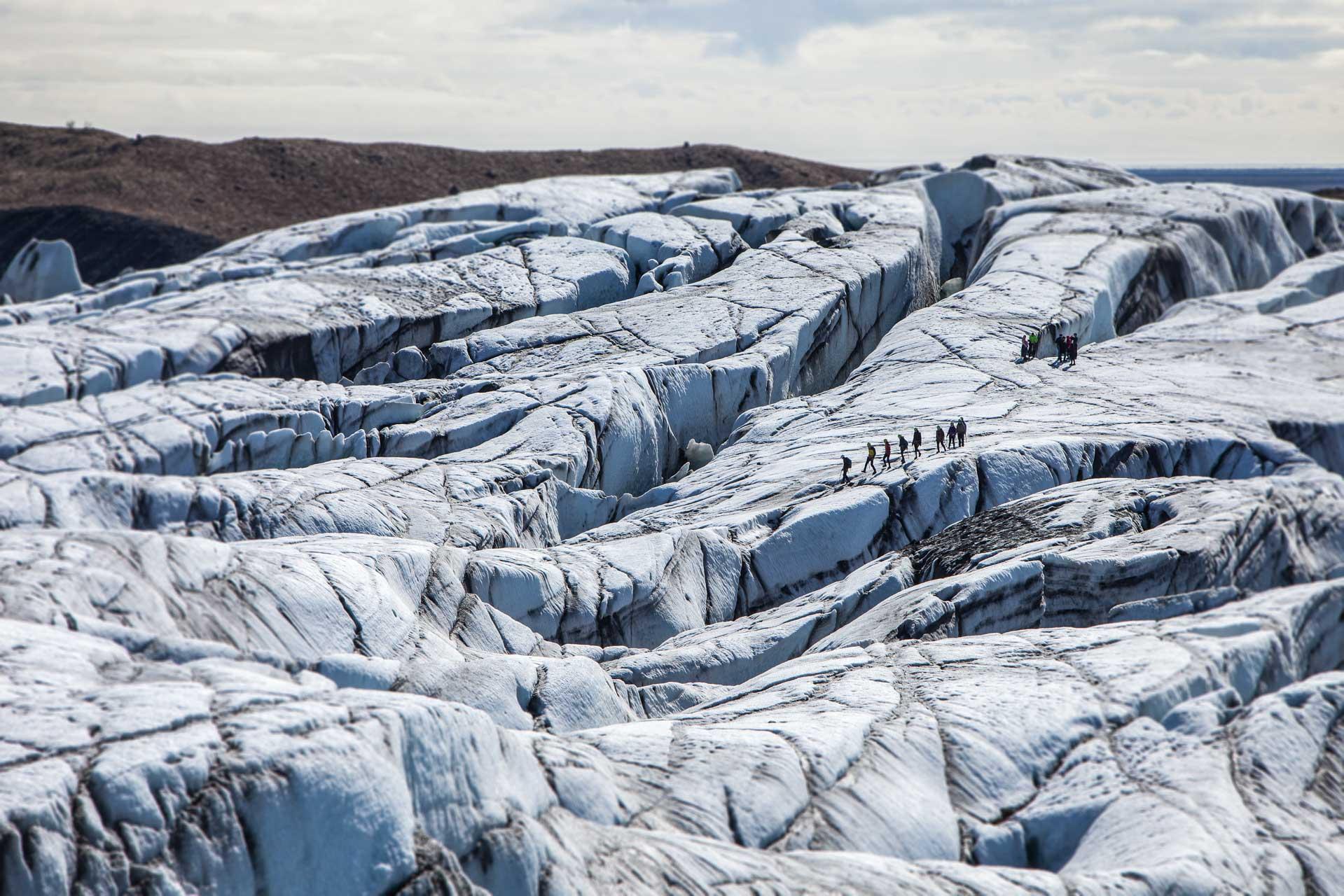The Science of Glaciers - Discovering Iceland's Frozen Giants
| All, glaciers, Travel Guide
From the lofty white domes of Vatnajökull to the shimmering ice caves of its outlet glaciers, Iceland’s frozen realms offer more than dramatic scenery—they are dynamic, living systems shaped by geology, climate and time. Come along as we explore the science of glaciers, how these magnificent masses form and evolve over millennia, and their role in shaping the Icelandic landscape.
Then come and experience them at close range with the glacier experts at Icelandic Mountain Guides.
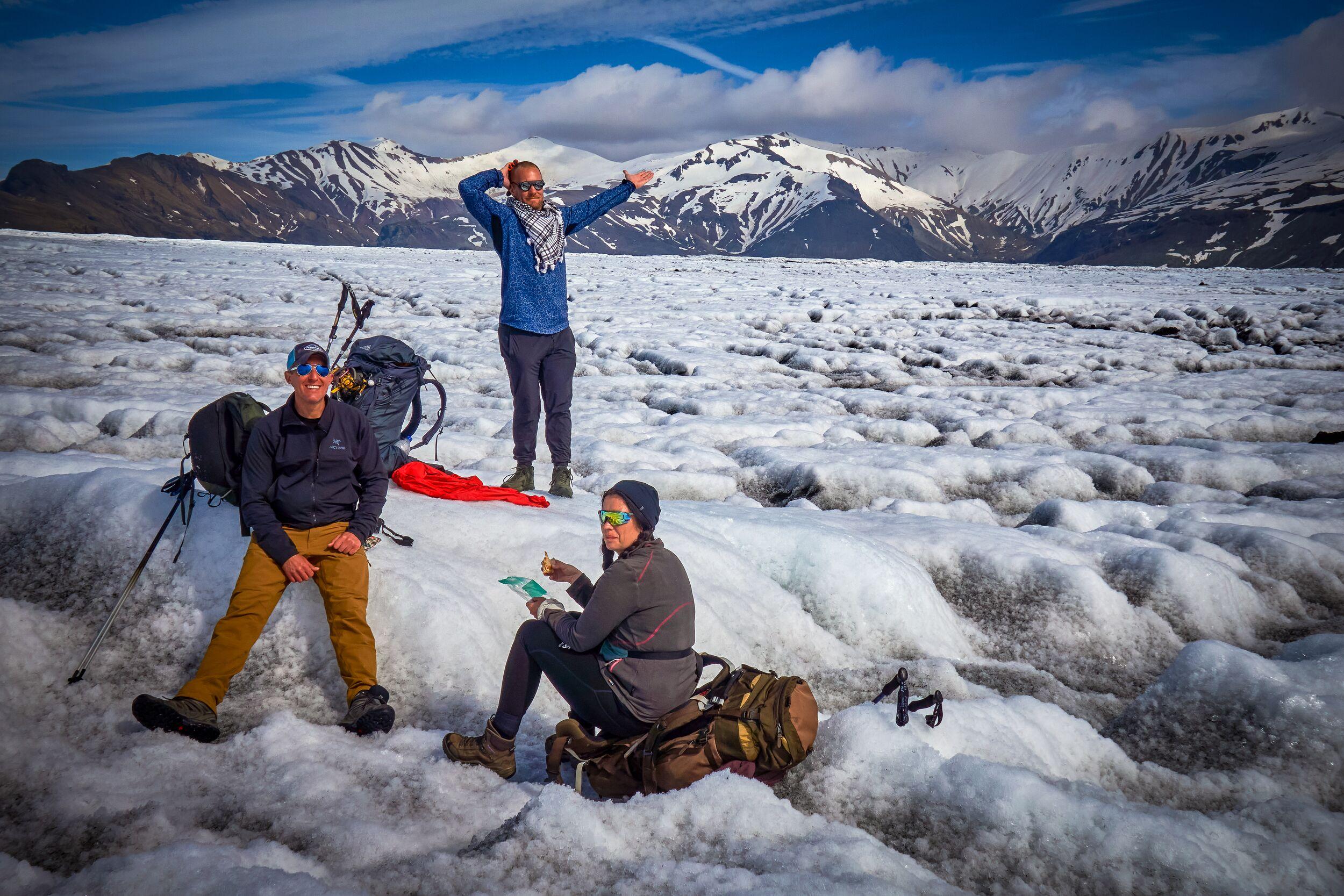
The Science and History of How Glaciers Form in Iceland
The story of glacier formation begins with snow accumulation. High-altitude plateaus and mountain tops in Iceland receive heavy snowfall, which over time becomes compacted into firn and eventually transforms into dense glacial ice. This process of glacier formation and movement drives the geology and terrain of the island. In Iceland, many of the great ice sheets—such as Vatnajökull—form in volcanic highlands, gathering mass until gravity causes them to flow outward.
Once the ice is thick enough, it begins to move. Glacier-flow science explains how mass migrates from gathering zones to ablation zones via internal deformation and basal sliding. In Iceland, glaciers sculpt the land: they carve U-shaped valleys, gouge bedrock, deposit moraines and create meltwater channels. The continuous interplay of accumulation and melt drives a slow but relentless reshaping of terrain.
Over the millennia, Iceland’s glaciers have waxed and waned. During the Little Ice Age (roughly 1300–1850 CE) glaciers in Iceland expanded dramatically. Since then, as climate shifted and volcanic/tectonic landscapes evolved, the glaciers have retreated and changed shape. The glacier geology in Iceland, therefore, is a record of ice, fire and tectonics, where lava flows meet glacial ice, ash blankets ice surfaces, and outlets surge and shrink. Interestingly, many of the dazzling ice caves you can explore in Iceland owe their existence to meltwater channels carved beneath outlet glaciers, only accessible when conditions permit.
When you stand on an outlet glacier like Sólheimajökull or peer into the chasm of an ice cave beneath Mýrdalsjökull, you’re witnessing glacier formation and movement in action: the crevasses, moulins (vertical shafts of meltwater), layered ash from past volcanic eruptions, and the sculpted surface of ice that is advancing, receding or remaining perched on the edge of change. In this way, Iceland is a perfect destination to get a crash course in glacier science. It is a land where geology, volcanism and glaciology converge.
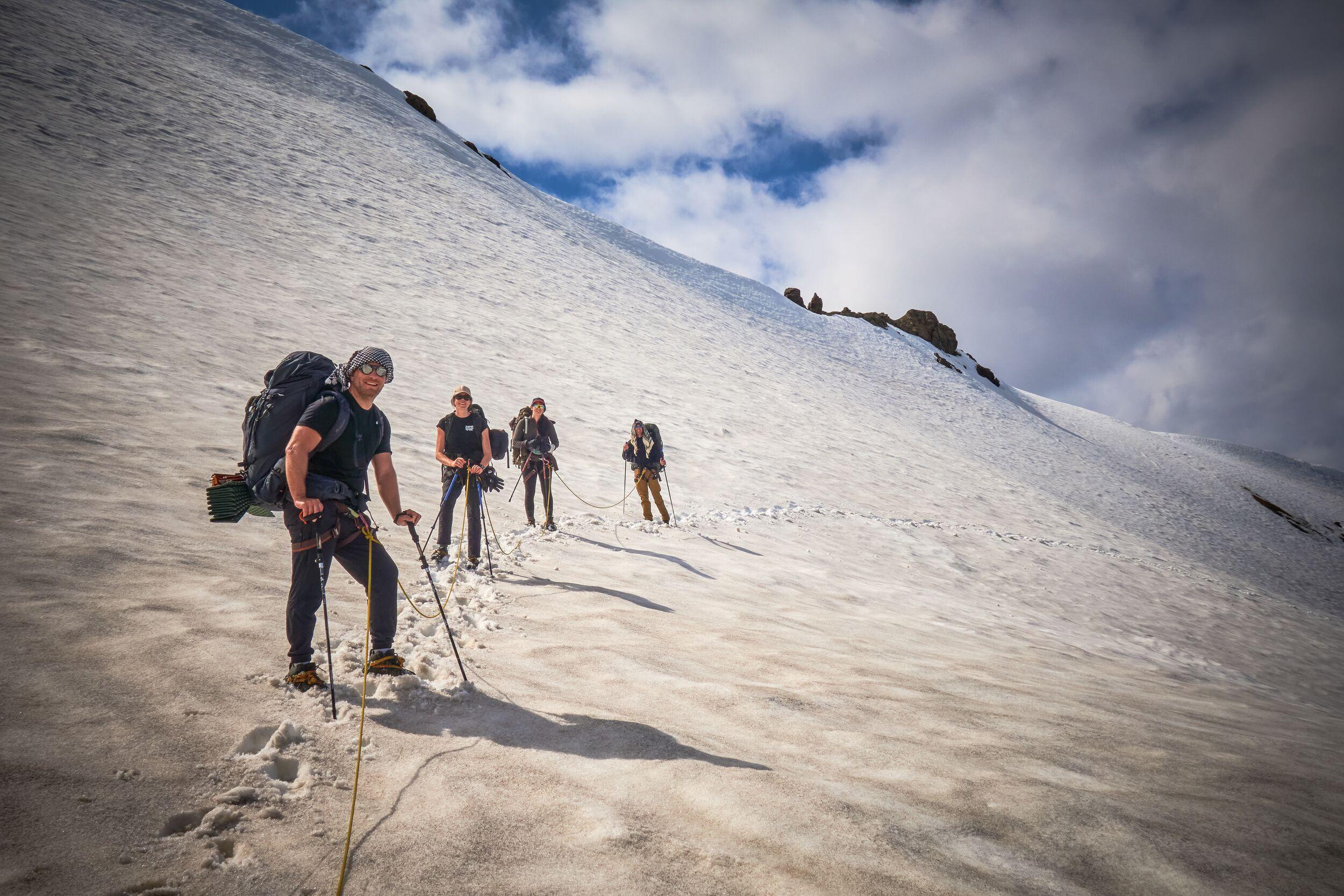
Glaciers Under Threat
While Iceland’s glaciers may seem timeless, they are in fact highly sensitive to climate change. Rising global temperatures and changing precipitation patterns mean that accumulation zones shrink, ablation zones expand and the dynamic balance that keeps glaciers stable is disrupted.
In Iceland, this effect is clear: glaciers are retreating, thinning and losing mass. In 2014, the glacier Okjökull—once part of Iceland’s glacier inventory—was officially declared dead and no longer qualifies as a glacier due to its inability to flow. This serves as a sobering reminder of how climate change is altering glacier geology and movement.
The glacier science underpinning this retreat is straightforward: if a glacier’s annual melt exceeds its annual accumulation, it will shrink. Reduced ice mass means less pressure, slower deformation, slower flow—and eventually stagnation and disappearance. In Iceland’s volcanic, high-energy climate system, the interplay of ice and fire means that outlet glaciers can respond quickly to warming, as surge behaviour alters, meltwater enhances basal sliding, and volcanic ash darkens ice surfaces, increasing solar absorption.
For travellers experiencing Iceland’s glaciers today, part of the encounter includes witnessing these changes. That reality adds urgency and poignancy to every glacier hike or ice‐cave exploration.

Glaciers in Modern Lore
Beyond their scientific and physical significance, glaciers in Iceland occupy a place in mythology, literature and contemporary lore. Consider Snæfellsjökull, the snow-capped volcano and glacier on the Snæfellsnes peninsula that was immortalised in literature as a gateway to the centre of the Earth in Jules Verne’s “Journey to the Center of the Earth”. Some modern interpretations even suggest alien life or otherworldly energies at its summit, adding a mystical dimension to the glacier’s geology. All that makes it an epic perch from which to view the 2026 solar eclipse.
Then there is the more modern infamy of Eyjafjallajökull, which in 2010 erupted beneath its glacier cap, sending an ash cloud across Europe that grounded aircraft, and reminded us that volcanic and glacial forces in Iceland can intersect in dramatic fashion. Its eruption reshaped its overlying ice, causing jökulhlaups (glacial outburst floods), and etching itself into modern consciousness.
In this way, Iceland’s glaciers are more than physical features—they are cultural and mythological landmarks.
When you walk across a glacier in Iceland, you are following in the footsteps of centuries of both natural change and human imagination. You become part of a story that is geological, mythological and deeply present.
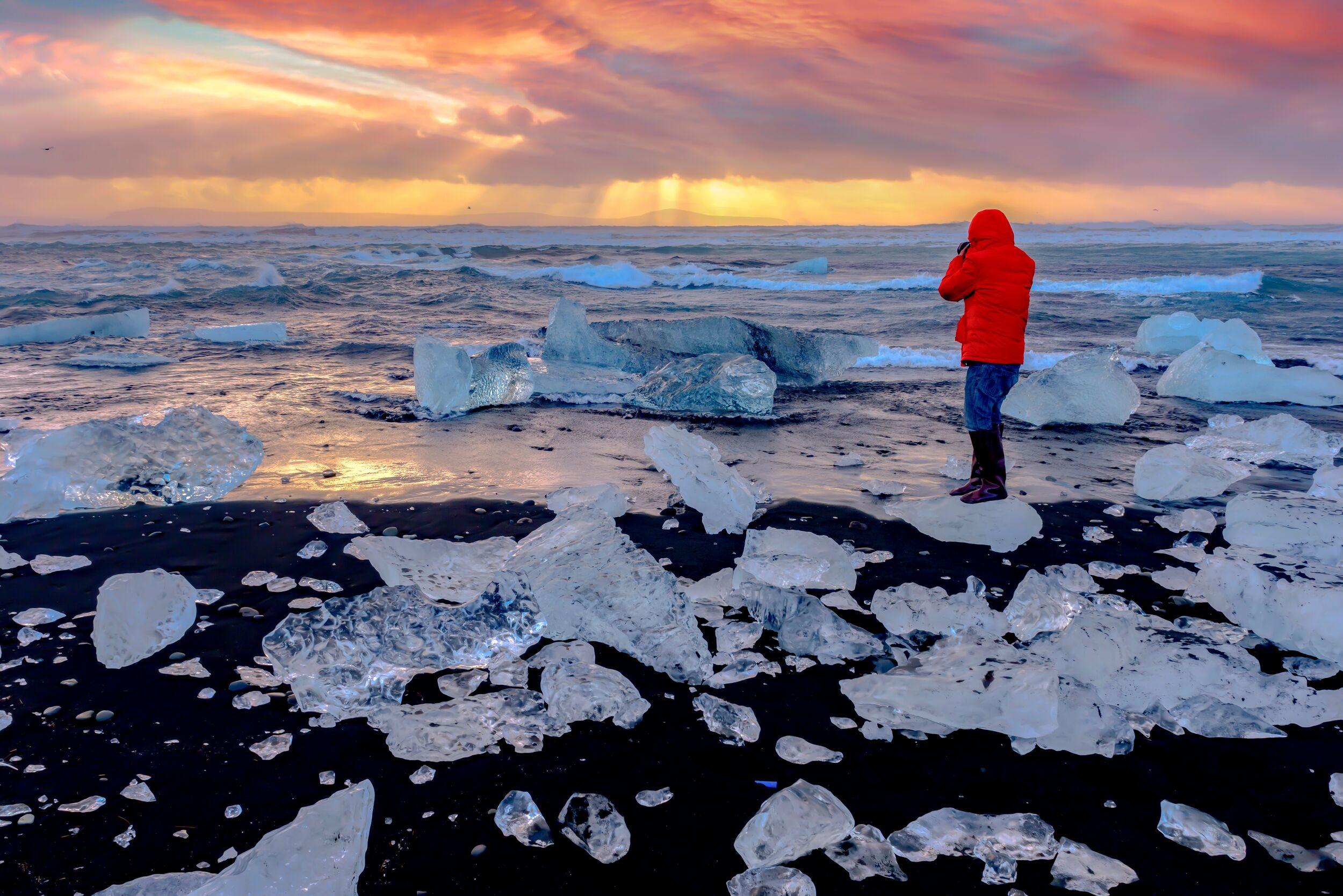
What You Are Walking On When Exploring Iceland’s Glaciers
Stepping onto a glacier in Iceland is a sensory-rich, intellectually stimulating and physically humbling experience. With Icelandic Mountain Guides, you’ll join certified glacier guides, don crampons, ice-axes and helmets, and traverse icy surfaces that are constantly reshaped by gravity, meltwater, ash and volcanic heat. When your guide explains glacier geology Iceland-style, you’ll learn not just about what you’re seeing in the present, but how it all came to be and how it is changing.
As you set foot on a glacier, you’ll encounter layers of compressed ice that originated from centuries of snowfall and delineated by visible stratification of ice, sediment and ash. You’ll walk near crevasses that hint at tensional stresses and flowing ice and glacial rivers beneath. You’ll see polish-smoothed bedrock where the glacier once slid, and sometimes black volcanic ash that tells of past eruptions mingling with ice.
On a guided glacier hike with Icelandic Mountain Guides, you’ll not only walk on the ice, you’ll also stop to discuss glacier flow science: how glaciers advance or retreat, how internal deformation allows the ice to move, how meltwater beneath the glacier can lubricate the base, and how volcanic heat can affect thickness and flow. You’ll also reflect on how the glacier is carving the land beneath and around you. Iceland’s valley walls have been sculpted by ice, and glacial lagoons like the popular Jökulsárlón were formed where meltwater pools.
Each step becomes both adventure and education: you are not simply walking across a cold landscape—you are traversing Earth’s memory, shaped by ice and time.
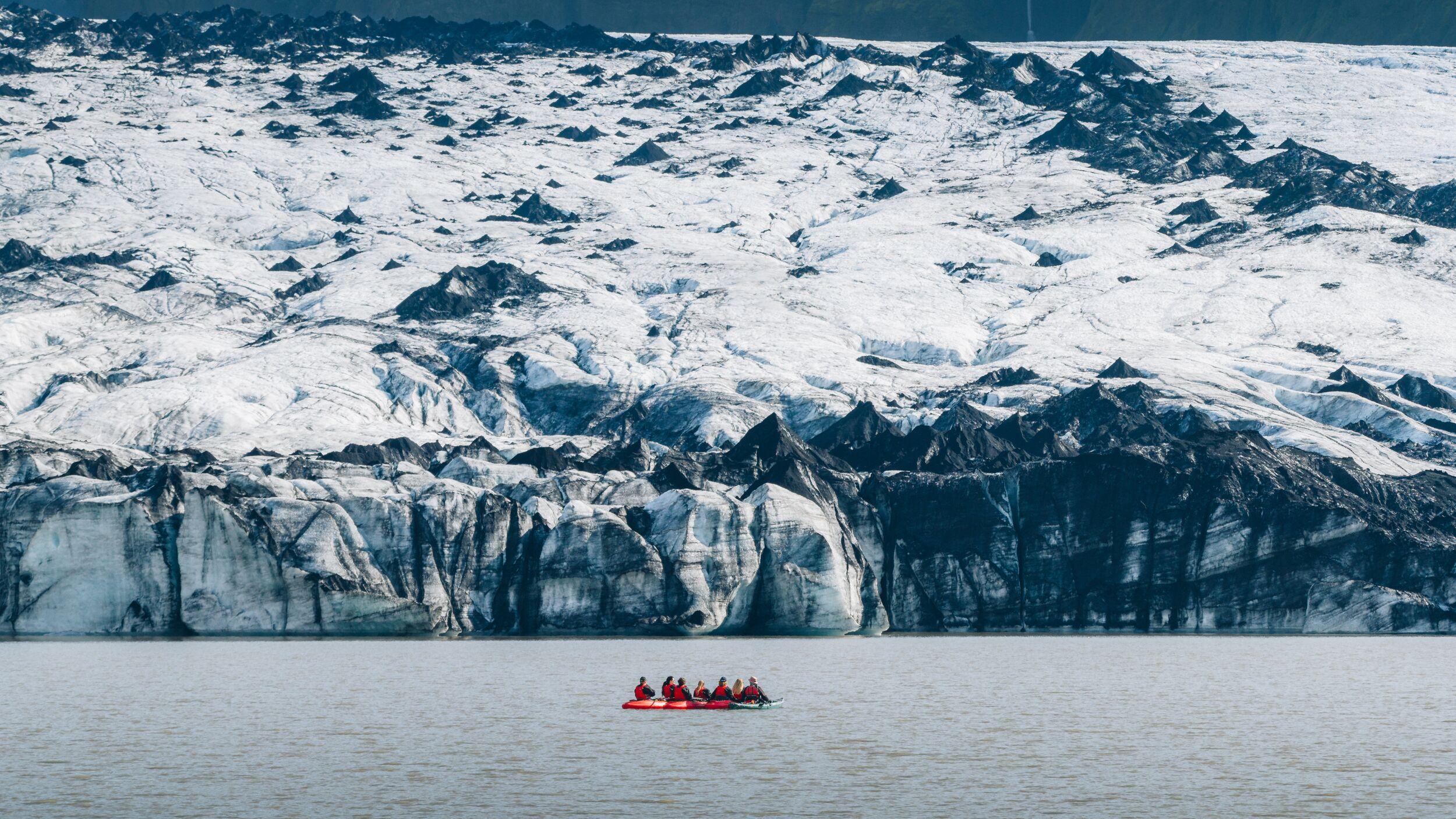
Venturing Beneath The Ice Giants
Beneath Iceland’s vast glaciers lies a secret, shifting world of ice caves — dazzling ice caves that have been sculpted by time, water and pressure. These natural wonders form when geothermal warmth or summer meltwater flows beneath the glacier, carving twisting tunnels through dense, centuries-old ice. As temperatures drop, the water refreezes, leaving behind luminous blue walls streaked with layers of volcanic ash — each band marking a past eruption or winter snowfall.
No two ice caves are ever alike. Some open as grand cathedrals of crystal, others as narrow, echoing corridors that shimmer like glass. Their colour ranges from deep sapphire to milky white, depending on how the ice compresses and how light refracts within. Constantly evolving and ephemeral, Iceland’s ice caves are living sculptures — fleeting masterpieces of geology and glacial movement that vanish and reform with every passing season.
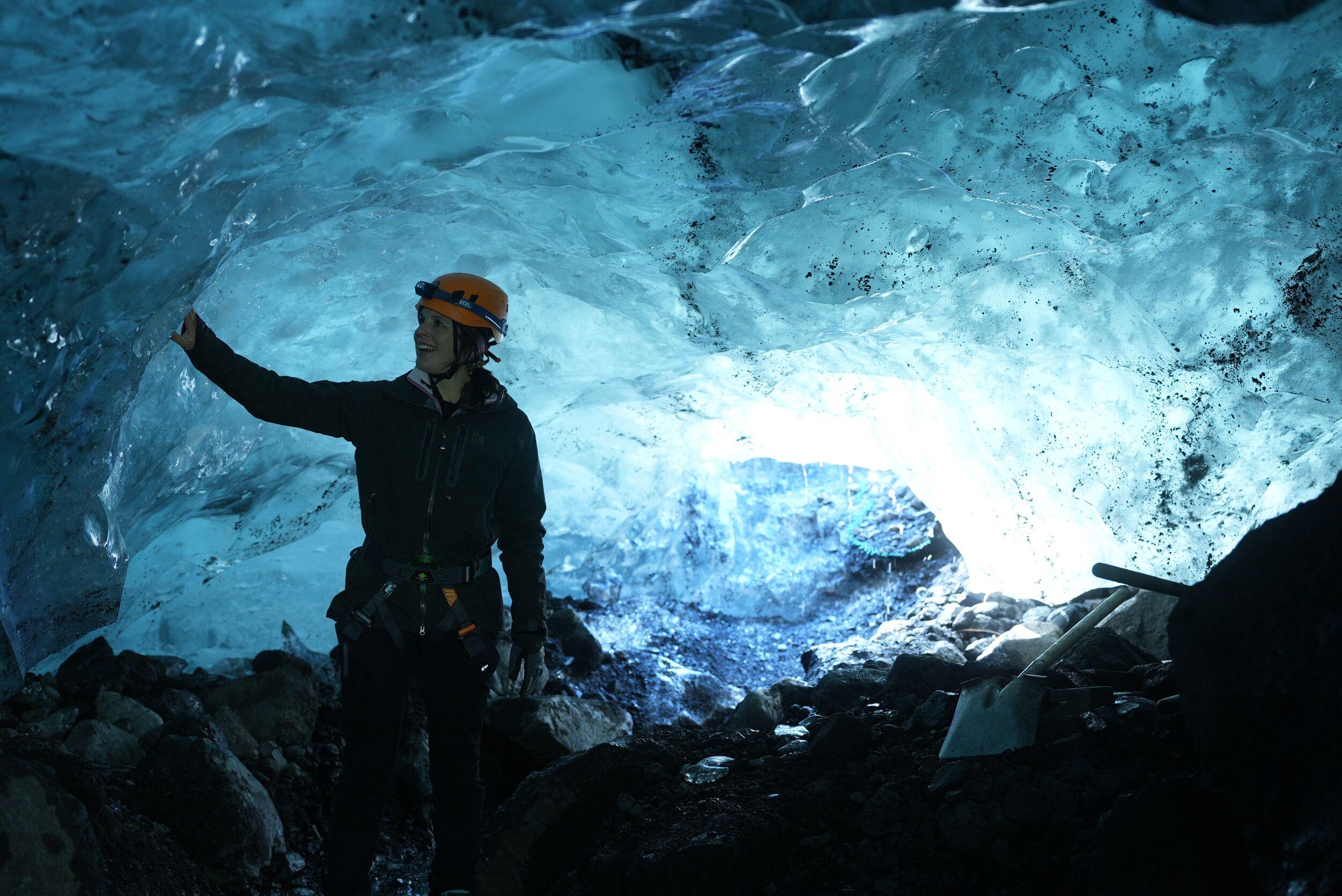
Top Ways of Experiencing Iceland’s Glaciers and Ice Caves
Here are three standout glacier tours offered by Icelandic Mountain Guides. Each invites you into the frozen heart of Iceland and gives you a chance to witness glacier formation and movement firsthand.
- The Secret Ice Cave: A spectacular one-day journey from Vík, this tour takes you via Super Jeep through black sand deserts and volcanic ash fields to an ice cave beneath the Kötlujökull glacier below the Katla volcano. Inside the cave you’ll observe blue walls of ice layered with volcanic ash—an immersive lesson in glacier geology, formation from volcanic settings, and the interplay of fire and ice.
- Skaftafell Ice Cave Tour and Glacier Hike: From the base at Skaftafell in Vatnajökull National Park you’ll traverse an outlet glacier, enter naturally formed ice tunnels and caves, and walk on the glacier surface with your expert guide. Along the way you’ll learn about glacier formation, melt-channel dynamics and ice flow science in one of Iceland’s most dramatic glacial landscapes.
- Sólheimajökull Glacier Hike and Ice Exploration: On this South Coast adventure you’ll strap on crampons and head onto Sólheimajökull’s icy tongue, strolling ridges, crevasses and, when conditions allow, stepping into a newly discovered blue ice cave. Your glacier guide will explain the glacier’s formation and movement, and show you how Iceland’s terrain is being carved minute by minute.
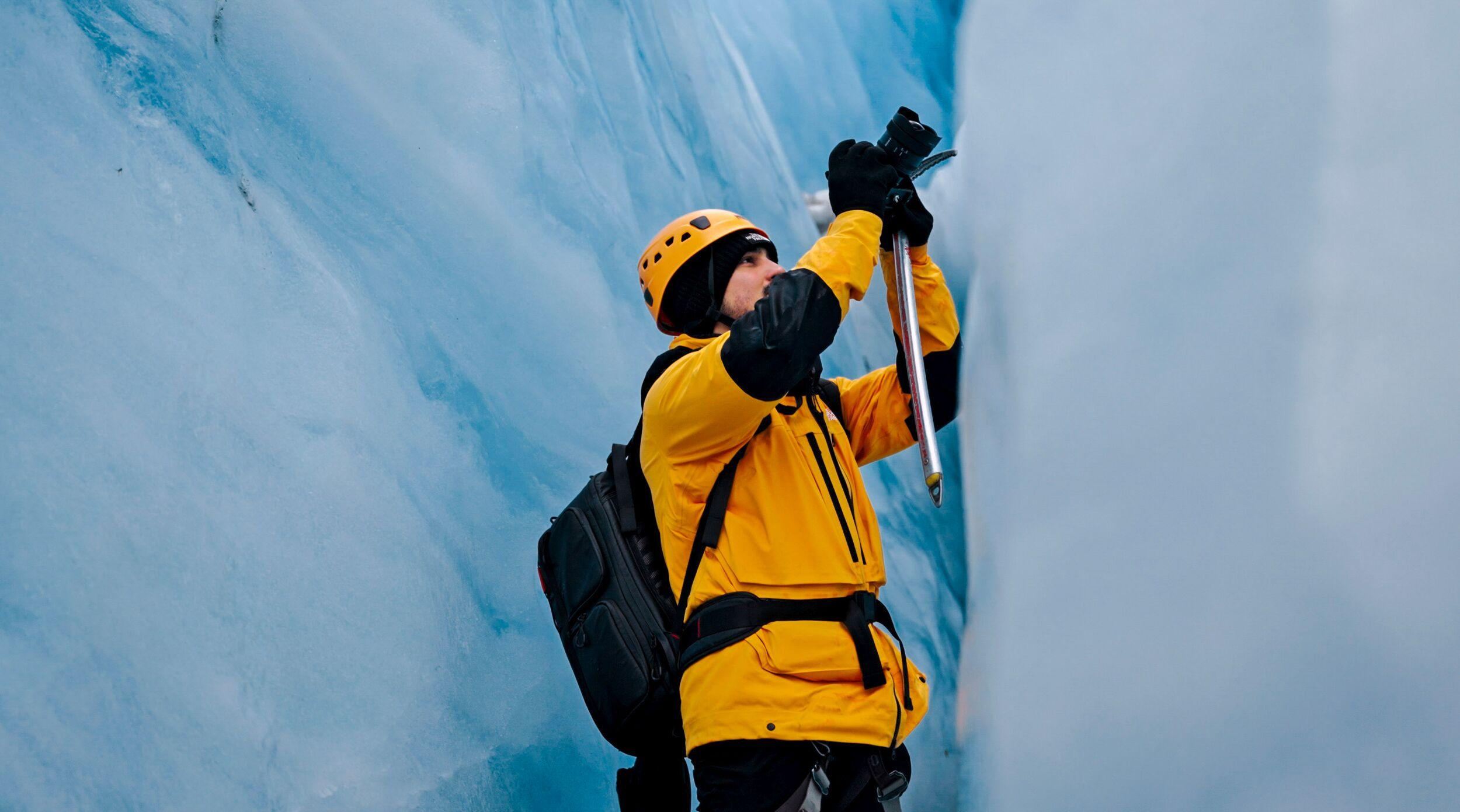
Safety First!
Safety is the foundation of every glacier and ice cave experience with Icelandic Mountain Guides. Each tour is led by certified glacier guides, extensively trained in glacier science, navigation, and rescue techniques. Before every excursion, guests receive a full safety briefing and are equipped with specialised gear — including crampons for traction, helmets, harnesses, and ice axes when required. Guides constantly assess conditions, from ice stability to weather and crevasse formation, adjusting routes to ensure optimal safety without compromising adventure.
Small group sizes allow for personal attention and close supervision, while all guides carry communication devices, first-aid kits, and emergency equipment. Every tour also adheres to strict environmental and safety protocols. With a deep respect for the ever-changing nature of glaciers, Icelandic Mountain Guides ensures every step on the ice — whether exploring an ice cave or crossing a glacier ridge — is both exhilarating and secure.
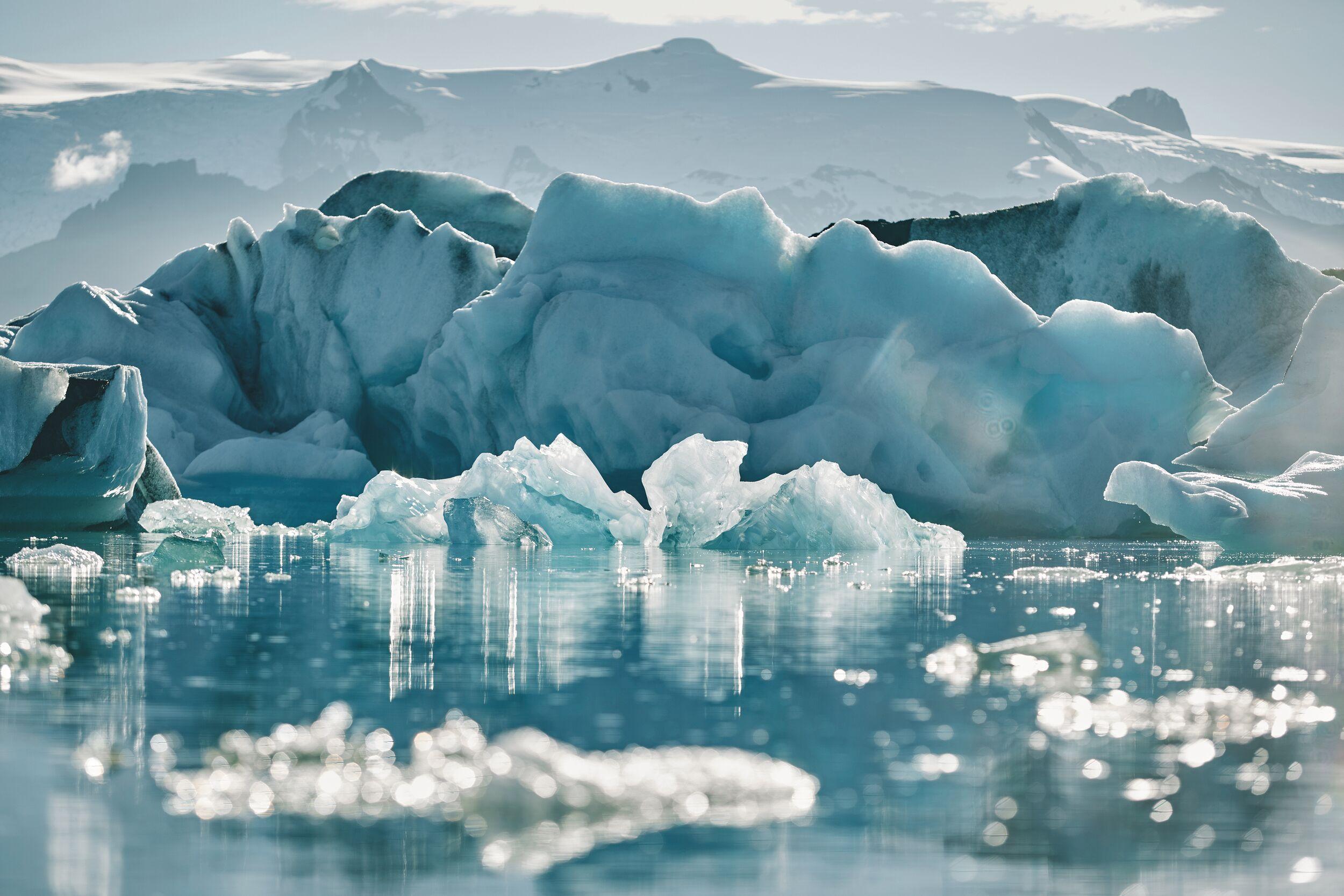
Now is the Time To Encounter Iceland’s Glaciers
Glaciers are among Earth’s grandest expressions of time. In Iceland, these icy giants have shaped the land, enriched folklore and now stand as living records of change. By learning the science of glacier formation, flow and landscape impact — and by participating in guided glacier and ice cave adventures — you can connect to something far greater than yourself while in Iceland.
Icelandic Mountain Guides invites you to move beyond the photo op and feel the chill of ancient ice, hear cracking crevasses, feel the hum of compressed centuries beneath your feet and understand how glacier geology in Iceland is evolving in the face of climate change. These formations are not static. They are living, moving, melting and retreating.
Whether it’s stepping into a blue ice cave beneath Katla, walking across the mighty Vatnajökull outlet in Skaftafell, or exploring Sólheimajökull’s crevassed terrain, you’ll come away with more than memories; you’ll leave with insight, respect and an awakened sense of our planet’s majesty.
Touch the ice. Hear the story. Walk through Iceland’s frozen history.
FAQs About Glaciers
How do glaciers form and what’s the timeline from snow to ice?
In Iceland, glaciers begin when snow accumulates in colder highland zones and doesn’t fully melt during summers. As new snow falls and presses down on older layers, the granulated snow gradually densifies into firn (ice in an intermediate stage between snow and glacial ice) and ultimately glacial ice. Over many decades the accumulation creates thick masses of ice. When that ice mass becomes sufficient, it begins to flow under its own weight.
What causes a glacier to flow, and how fast do they move?
Glacial flow occurs when the weight and thickness of the ice exceed what static equilibrium allows—gravity takes over. The ice deforms and slides over its bed, aided by melt-water at its base especially in temperate glaciers. Icelandic glaciers aren’t frozen solid to their bed everywhere; outlets or surge-type glaciers can advance rapidly. For example, some have advanced by several metres per day during surge events.
How do glaciers erode and reshape Iceland’s landscape?
Glaciers are like slow, immense bulldozers. As they flow, embedded rock and ice scour the bedrock beneath them, carving valleys, gouging fjords and transporting debris. According to the Natural Science Institute of Iceland (NAT), many of Iceland’s prominent valleys and fjords were formed by successive glaciations.
What landforms like moraines, drumlins, U-shaped valleys, do glaciers leave behind?
As ice retreats, it leaves a suite of land-forms: ridges of unsorted debris (moraines), flat plains of outwash, and valleys with broad floors and steep sides (U-shaped valleys). NAT lists glacial till as the most common surficial deposit in Iceland, formed as glaciers receded at the end of the last glaciation.
What lies beneath the glaciers in Iceland—are there volcanoes or geological activity?
Yes! Many of Iceland’s ice-caps sit atop or near active volcanic systems.
How do ice caves form, and why do they often appear blue?
Ice caves often develop within or beneath glaciers when meltwater channels carve out tunnels or voids in the ice. Over time, the ice walls are polished and compressed, reducing air bubbles and increasing clarity. The blue appearance arises because dense glacial ice absorbs longer wavelengths of light and transmits blue wavelengths more strongly.
Why is glacier science important for safety and interpreting your tour?
Understanding glacier science — meaning how ice flows, where crevasses form and how meltwater influences structure — is the key to safe glacier exploration. Because glaciers are dynamic and sometimes unpredictable environments, an expert guide who knows how to read ice movement and crevasse patterns, and understand seasonal changes can navigate more safely and explain what you’re seeing. Icelandic Mountain Guides’ tours are not just adventure but also guided by glacier expertise.
How is climate change affecting glaciers in Iceland?
Glaciers in Iceland are retreating and thinning. According to NAT, all of Iceland’s ice-caps have retreated and thinned significantly since the end of the 19th century. The pace of change has accelerated since the mid-1990s. This means fewer accumulation zones, more melt and the potential loss of some smaller glaciers entirely.
What makes Icelandic Mountain Guides particularly qualified in glacier science and guiding?
Icelandic Mountain Guides are leading experts in glacier exploration. We offer a range of glacier and ice cave tours, combining adventure with technical guidance, so participants gain both experience and insight. Our guides are rigorously trained and amply experienced guiding on the specific terrains we bring travellers.
Can tours include scientific explanations or mini guided lessons about glacier dynamics?
Absolutely! On Icelandic Mountain Guides’ tours, you’ll receive more than a walk on ice. We’ll guide through the key features of Iceland’s glaciers, including their formation, flow, ever-evolving structures and how landforms were shaped. Our tours allow you to understand glacier mechanics first-hand.
Keep me informed about the Icelandic Mountain Guides Blog
Outdoor adventure in Iceland is our specialty. Subscribe to our free monthly newsletter to learn when to go, what to do and where to have the best adventures in Iceland.
Related Blog Posts
Related Tours
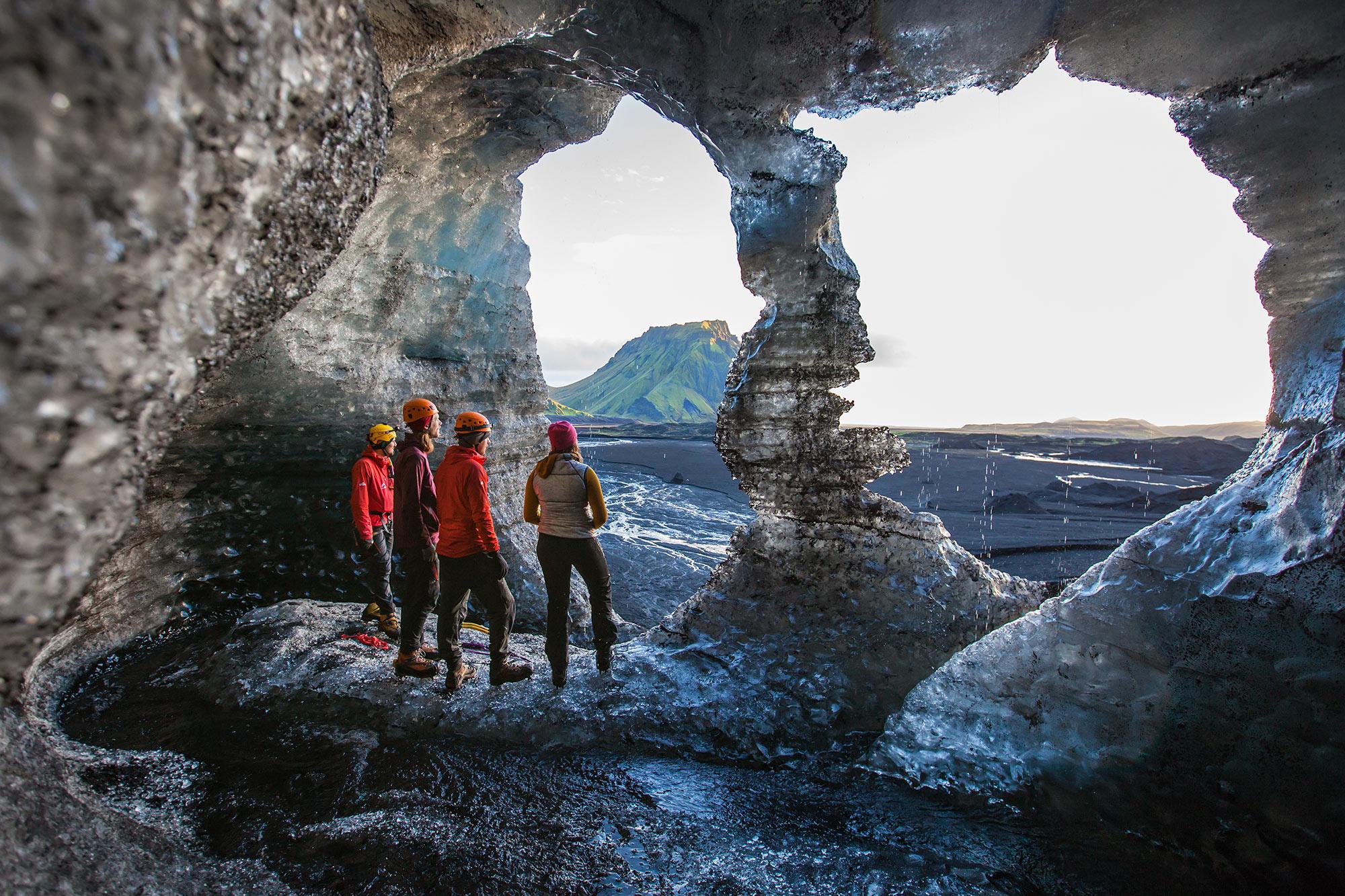
The Secret Ice Cave
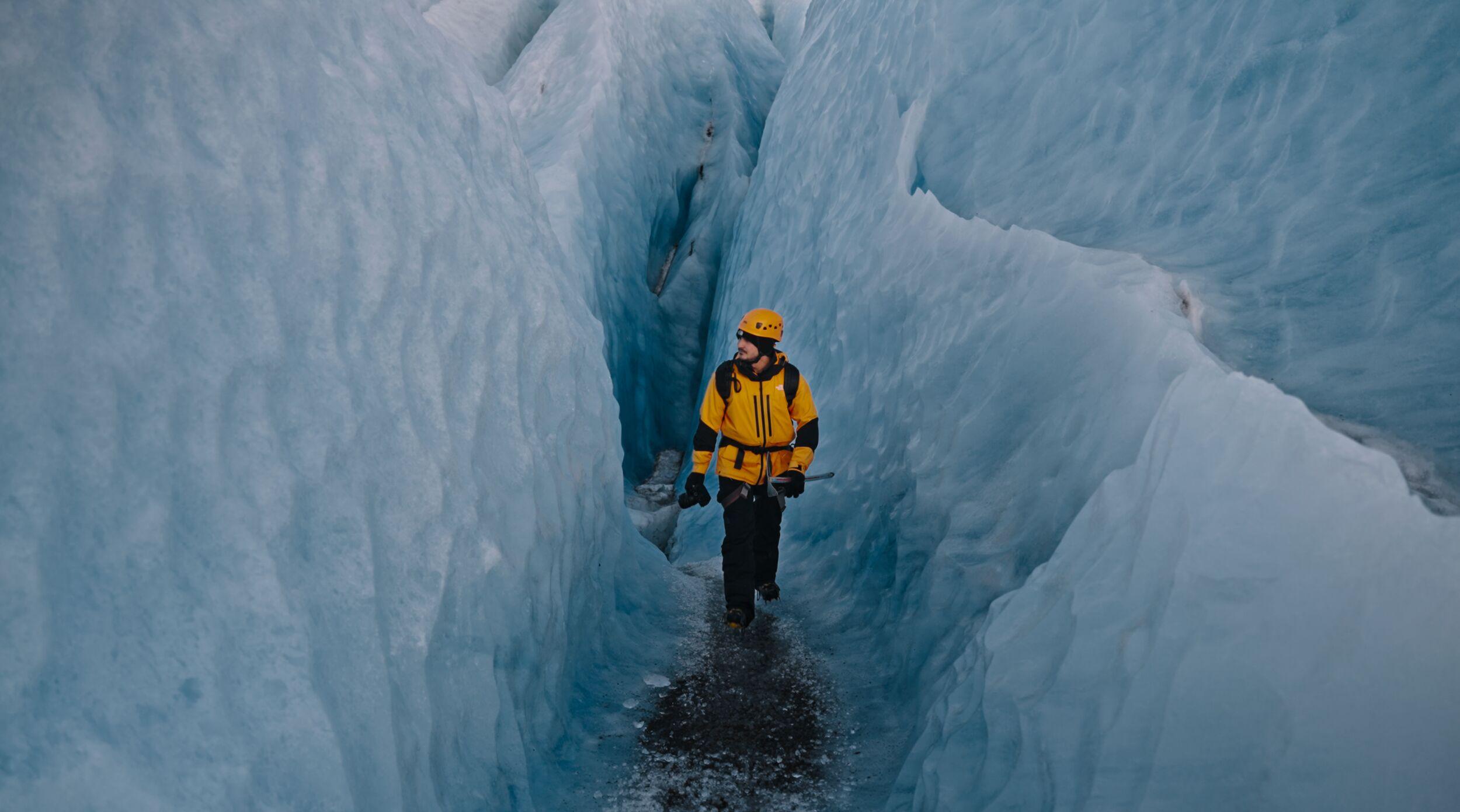
Blue Ice Experience - 3.5-hour Skaftafell Glacier Hike
